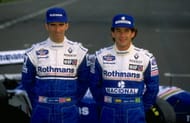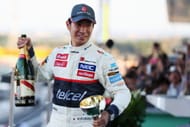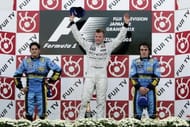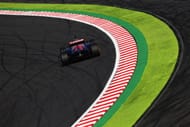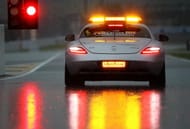Formula One heads from the silent and serene Korean International Circuit to the buzzing and iconic Suzuka Circuit in Japan for Round 15 of the calendar. While Sebastian Vettel would be hoping to clinch the title in Japan, Fernando Alonso, his nearest title rival, would be trying hard to make it difficult for the three-time World Champion.
Here are the 10 things you may want to know about the Japanese GP,
Legendary Grand Prix
24 out of a total of 28 Japanese GP have taken place at Suzuka. It is one of the oldest tracks on the Formula One calendar and one of the very few which have an old school design (figure-of-eight track) making it both interesting and challenging for drivers.
While the inaugural Japanese GP was held in Fuji in 1976 and 1977, Suzuka hosted its first GP in 1987. Fuji hosted the races again in 2007 and 2008 as Suzuka underwent reconstruction. The Suzuka is owned by car manufacturers, Honda.
Schumi is the King

Michael Schumacher has won the Japanese GP six times and has the highest record of eight pole positions in Japan
Michael Schumacher remains the undisputed king of the Japanese GP with numerous records to his name. He won the Japanese GP six times – first with Benetton in 1995 and then with Ferrari in 1997, 2000, 2001,2002, and 2004. He also had three podium finishes, eight pole positions and four fastest laps at the Japanese GP.
The German’s eight pole position in Japan equaled Ayrton Senna’s record for most pole positions at a single circuit which the Brazilian had achieved at San Marino. Schumacher’s victory at Japan in 2002 was the last of his record 19 consecutive podium finishes.
Championship decider
The Japanese Grand Prix has been witness to the most title deciding rounds than any other Grand Prix with 12. It all started with James Hunt’s win at Fuji in 1977. The win however was undermined by his third place at the inaugural F1 Japanese Grand Prix in 1976 after he beat bitter rival Niki Lauda to take the Championship.
A number of legendary drivers secured their title’s at the Japanese GP. Nelson Piquet (1987), Alain Prost (1989), Ayrton Senna (1988, 1990, 1991), Damon Hill (1996), Mika Häkkinen (1998, 1999), Michael Schumacher (2000, 2003) and Sebastian Vettel (2011) have all secured their championships here. Nelson Piquet won his Championship in 1987 even before the race started as title rival Nigel Mansell was ruled out of the race with a back injury he suffered during qualifying.
Mclaren the best team

Mclaren have been the best team at the Japanese GP with nine wins their last by Jenson Button in 2011
McLaren have been the best team at the Japanese Grand Prix with nine victories. James Hunt took the first win in 1977 at Fuji, followed by wins at Suzuka for Ayrton Senna (1988, 1993), Gerhard Berger (1991), Mika Häkkinen (1998, 1999) and Kimi Raikkonen (2005). Lewis Hamilton won at Fuji in 2007, and Jenson Button at Suzuka in 2011. They also have 25 podiums to their name.Ferrari have the second most wins in Japan with seven.
Front Row is key
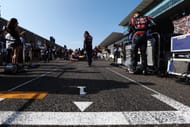
The first row at Suzuka holds the key with the stats showing a high percentage of winners at Japanese GP starting from the front
The pole sitter has been victorious in 14 of the 28 Japanese Grands Prix to date. At Suzuka the polesitter has won 50 percent of the time – 12 times in 24 races. The remaining 8 winners have also started from the front row.
The exceptions to the statistic were Fernando Alonso (2006) winning from fifth, Alessandro Nannini (1989) and Nelson Piquet (1990) from sixth on the grid and the best of them all was Kimi Raikkonen’s mesmerizing charge from 17th in 2005, overtaking Giancarlo Fisichella on the final lap for the lead and the win.
Japanese driver history
17 Japanese drivers have started a world championship Grand Prix. Kamui Kobayashi’s third place for Sauber in 2012 made him the first Japanese driver on the podium in Japan since Aguri Suzuki for Lola-Lamborghini in 1990. Kobayashi’s was the first podium for a Japanese driver since Takuma Sato finished third at the 2004 US Grand Prix. There will be no representation of a Japanese driver in 2013 race with the last occasion of no home country participation being in 2001.
Current grid
Sebastian Vettel has taken pole position in Japan on each of his last four visits(2009-2012). Sebastian Vettel holds the record for Youngest Grand Prix winner at the same Grand Prix on 2 occasions( aged 23 years, 98 days) with wins in Japan in 2009 and 2010.
Five drivers on the current grid have won the Japanese Grand Prix – Sebastian Vettel (2009,2010,2012), Fernando Alonso (2006,2008), Kimi Raikkonen(2005), Lewis Hamilton(2007) and Jenson Button (2011).
Vettel remains the only driver to win his Championship in Japan(2011). Hamilton, Alonso and Button,the other three Champions on the current grid won their Championships in Brazil. Jenson Button has appeared in the Japanese Grand Prix more times than any other driver on the grid and this year will be his 12th start.
Kimi remains unbeatable
The lap record at Suzuka stands at 1m 31.540s, set by Kimi Raikkonen in 2005 driving for McLaren-Mercedes. The lap record was set en-route to his famous and remarkable leap from 17th to win the race after taking lead on the final lap.
One of the best designed circuits
The figure-eight layout makes Suzuka stand-out from some of the other tracks. It is the only circuit on the calendar which does the first half of the lap clockwise and the second half anti-clockwise. The famous circuit was designed by Dutchman John ”Hans” Hugenholtz 1962. However, subsequent changes have been made to the original circuit leading to its current design.
Safety car
The safety car has been deployed in six of the last eight Japanese Grands Prix. While the safety car has made an entry mostly because of on track crashes, it has been out on track due to rain only once.
